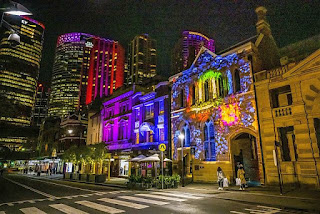 |
| Italy's Lake Como is stunningly beautiful and eclectic (Courtesy: Pixabay) |
Created
by Kevin Systrom and Mike Krieger, Instagram is a photo and video-sharing
social media networking service owned by Facebook in which an account's posts
can be shared publicly or with pre-approved followers. Users can browse other
users' content by tags and locations, and view trending content. They can also
"like" photos
and follow other users to add their content to a feed.
To help
users discover both photos and each other, "hashtags" were introduced
in January 2011. Today, Instagram encourages users to make tags both specific
and relevant, rather than tagging generic words like "photo", to make
photographs stand out and to attract like-minded Instagram users.
 |
| The UK's Lake District took top honors (Courtesy: pixabay) |
As of
the new year, the most-followed person on Instagram is footballer Cristiano
Ronaldo with over 196 million followers, while the most popular woman
is singer Ariana Grande at more than 170 million.
The most
liked photo on Instagram as of January 14, 2019
is a "picture of an egg," posted by the
account @world_record_egg. Created for the sole purpose of surpassing the
previous record of 18 million likes on a Kylie
Jenner post, the picture currently has over 53 million likes.
 |
| Scotland's Loch Ness, home of the legendary Nessie monster (Courtesy: pixabay) |
With
that information as background, Showerstoyou.co.uk decided to discover the most
"Instagrammable" lakes around the world to help travelers decide
where to go on their next picturesque trip.
Choosing
lakes throughout the world, Showerstoyou.co.uk set about the task of gathering
the number of hashtags per lake in order to identify which would make the best
Instagram-worthy place to visit next.
 |
| Nevada's Lake Tahoe (Courtesy: pixabay) |
The top
choice was immediately embroiled in controversy since the area is made up of a
multitude of lakes rather than a single body of water. Showers To You explained
their decision by "taking (the Lake District )
as a whole due to the fact it is well known for its glacial ribbon bodies of
water."
Also
counted among the top ten was the UK Scottish Lake
The United States rates second and third on the list
with Lake Tahoe taking the number two position and Lake
Michigan number three. Both have well over 2 million, 2 hundred
thousand hits. Notably the first three spots are the only ones with 2 million or
more images.
 |
| Lake Erie lighthouse -- The Great Lakes took 4 of the first twelve places (Courtesy: pixabay) |
Also
impressively, the Great Lakes captured four of the first twelve positions;
3--Lake Michigan (2,208,442), 6--Lake Erie (863,446), 7--Lake Superior
(832,139), 12--Lake Huron (377,916) Ironically, Lake Ontario did not make the
list at all.
Yet
another surprise rounds out the top five with the Dead Sea in Israel , Jordan
and Palestine
Of the
top 20 most instagrammed lakes, the United States has seven. Only three other
countries rate more than one as Russia ,
Bolivia and the UK
 |
| Lake Titicaca in Bolivia (Courtesy: pixabay) |
Perhaps
the best known lakes with the lowest totals are 18th ranked Lake Titicaca in
Peru and Bolivia (110,703) followed by Lake Victoria in Tanzania, Uganda,
Kenya, Burundi and Rwanda. With 51,888 'grams Lake Victoria
And just
for the record, Veronica
Lake








































